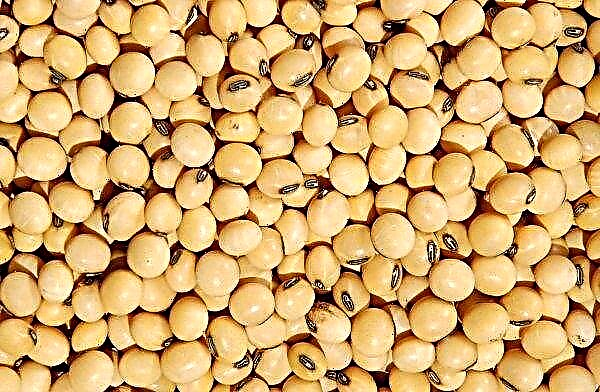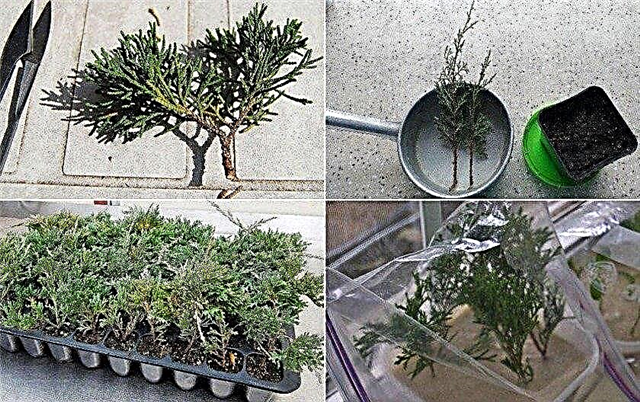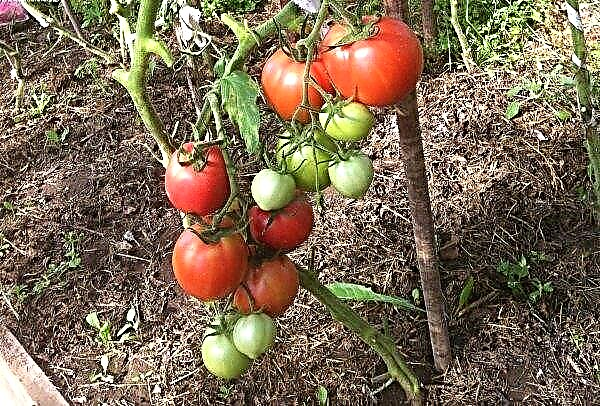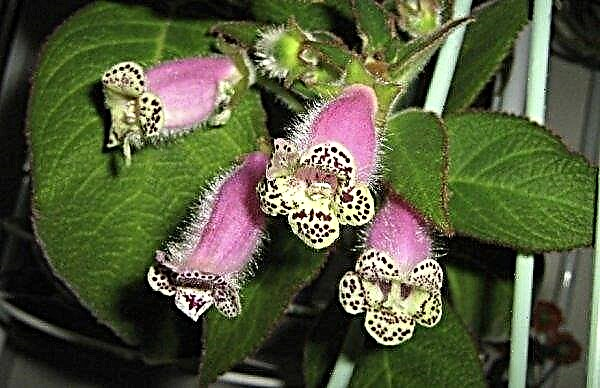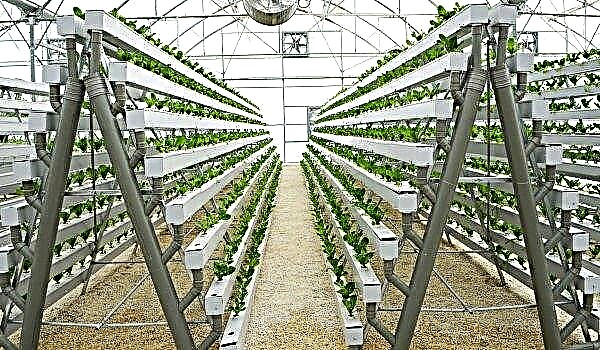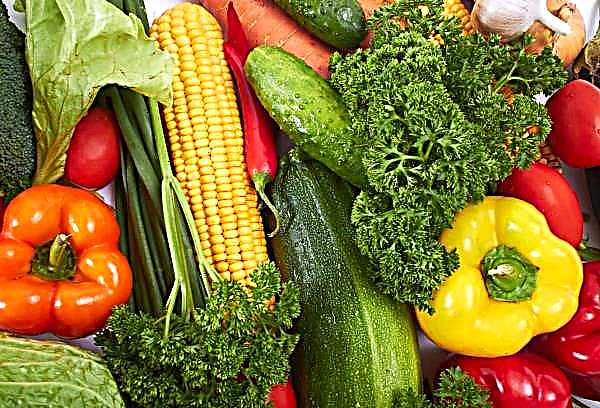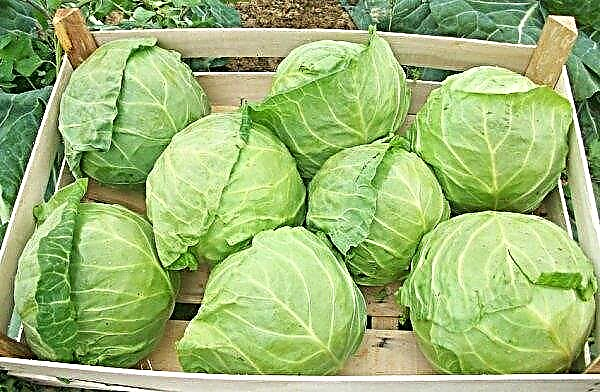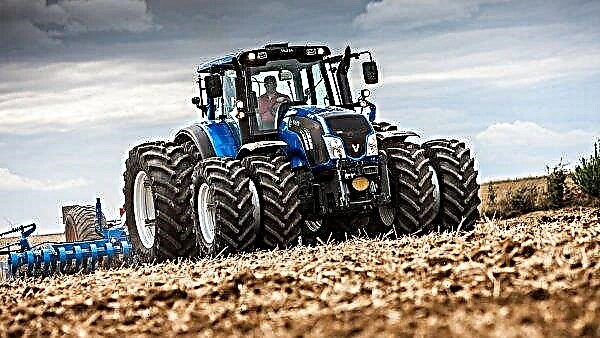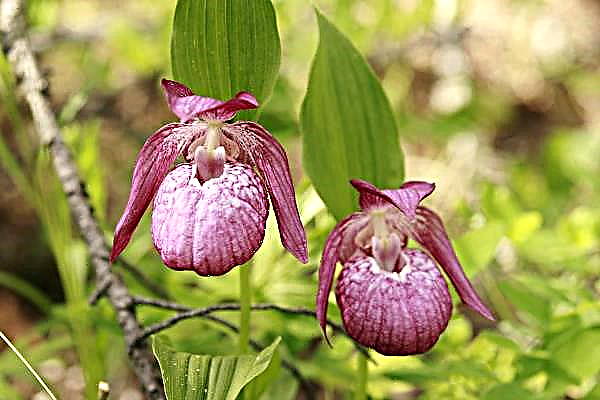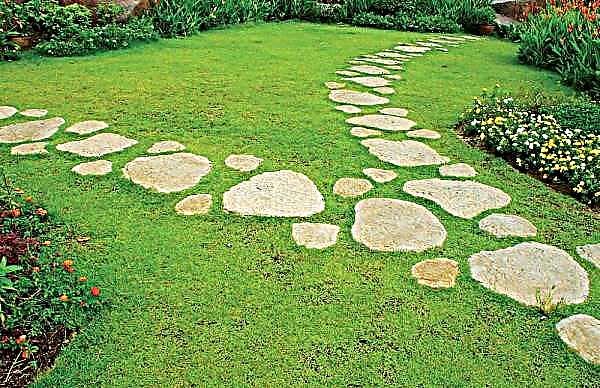Gardeners living in regions with a cool climate and wanting to grow peppers are concerned about getting stable crops of this heat-loving crop. Here, early varieties with resistance to low light and lower temperatures are needed. Such unpretentious varieties include Morozko pepper. We learn what the Morozko sweet pepper variety is, how to grow it and what care is needed for it.
Variety selection and description
The Morozko pepper variety was bred from the West Siberian Vegetable Experimental Station and zoned in their region. It was entered in the State Register of the Russian Federation in 2001 and recommended for small farms.
Frost is an early ripe variety and can reach technical ripeness on the 110–115th day from the appearance of seedlings. Biological ripeness occurs on the 125th day.
Bushes of this variety of standard type can reach 80 cm, but on average reach about 60 cm. The foliage is medium in size, slightly wrinkled, has a green color. On it at the same time from 10 to 29 cone-shaped fruits are tied, which, when biological ripeness is achieved, turn red. Their weight averages 65 g, but often there are also 100 gram fruits. The wall thickness is 5–7 mm. It has a rich taste and aroma. Great taste makes them well suited for fresh consumption, as well as for workpieces, well suited for stuffing. The skin is smooth, glossy, inside there are 2-3 nests.Did you know? Fruits that have reached biological ripeness, colored red, contain much more vitamin C than peppers in a state of technical ripeness, which have a green color.
Photo gallery
The variety is unpretentious, tied up and bears fruit in adverse weather conditions, resistant to alternariosis. It can be grown in open and protected ground.Advantages and disadvantages
- Pepper variety from Siberian breeders Morozko has the following advantages:
- getting an early harvest;
- resistance to adverse factors;
- stable fruiting;
- great taste;
- universality of use.
Did you know? The largest crops of pepper from their greenhouses receive in the Netherlands. The Dutch believe that yields below 5 kg per 1 m² are too modest.
How to grow seedlings on your own
Pepper culture is grown in seedlings, and Morozko's pepper variety is no exception.
The timing
In the northern regions and in the middle zone, Morozko pepper seeds are sown in late February - early March. Residents of the southern regions, Ukraine and Moldova can sow them almost a month earlier. In any case, it should be noted that seed germination will take at least 10 days, and seedlings of early peppers are planted on beds at the age of 60 days. By this time, the soil temperature at a depth of 10 cm at the planting site (greenhouse, garden beds) should warm up to + 15 ° C.
In any case, it should be noted that seed germination will take at least 10 days, and seedlings of early peppers are planted on beds at the age of 60 days. By this time, the soil temperature at a depth of 10 cm at the planting site (greenhouse, garden beds) should warm up to + 15 ° C.
Check out the features of growing such varieties of early pepper:
Soil and capacity
For growing seedlings of Morozko pepper, you can take purchased universal soil or make a soil mixture yourself. For example, mix 2 parts of the fertile soil layer from the beds with 1 part of sawdust (sand), 1 part of peat and 1 part of humus. It is recommended to add a handful of ash to one 10 liter bucket in this mixture. It is recommended to bake a home-made mixture in the oven or pour boiling water for disinfection.
It can be grown in boxes, peat tablets and pots, plastic cassettes, pots, cardboard trays and home-made containers (from plastic bottles or milk cartons). All of them have their pros and cons. It should be borne in mind that the size of the containers should not be less than half a liter per plant. The optimal size of an individual container for one pepper is a container height of 10-15 cm and the same width. 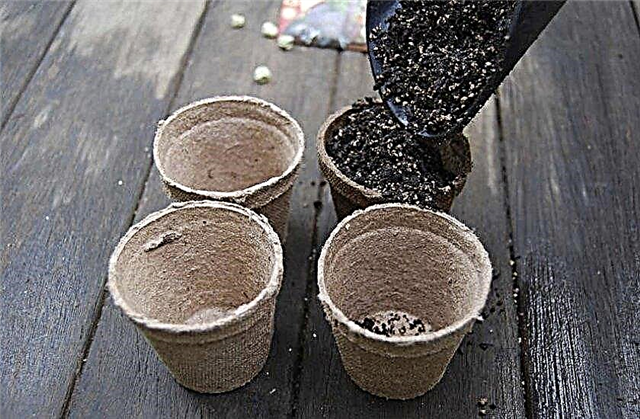 It is most convenient to grow peppers in peat pots, although such pots are not cheap and evaporate moisture very much; therefore, gardeners often stop on junk material - cut bottles and dairy packaging in which drainage holes are made.
It is most convenient to grow peppers in peat pots, although such pots are not cheap and evaporate moisture very much; therefore, gardeners often stop on junk material - cut bottles and dairy packaging in which drainage holes are made.
Important! Pepper seedlings are best grown in individual containers, since its root system does not like extra transplants. Pikikov retards the growth of this culture for 2 weeks.
Seed selection and preparation
When buying seeds in bags, the first thing you need to pay attention to the shelf life and characteristics of the variety. The sachet also usually indicates the recommended sowing time for seedlings and the timing of planting in the soil, the planting pattern, and the harvesting period.Before planting, the seeds must be soaked for etching in a 2% potassium permanganate solution for about 20 minutes, and then rinsed. It will be useful to use stimulants "Zircon", "Novosil", "Epin". A good option for stimulation and nutrition is to use an ash solution. For this, 3 tbsp. l ash should be insisted for 1-3 days in 1 liter of water, and then in the solution soak the seeds for 3-4 hours. After stimulants, the seeds are not washed, but dried on a napkin.
To accelerate and test the germination of seeds before planting, it is recommended to germinate. To do this, they wrap it in moist gauze and leave it in a warm place (+ 22 ... + 25 ° C) for 2–7 days. After germination, they are immediately planted in prepared containers with soil mixtures.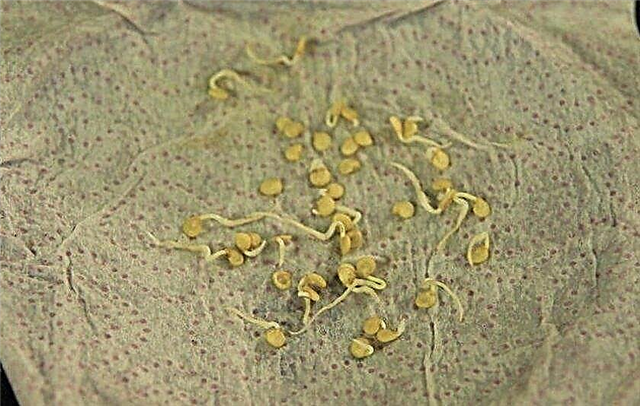
Sowing seeds
Seeds are sown in individual containers of 1-2 seeds per each. They are closed to a depth of 1 to 1.5 cm. Then the crops are moistened, covered with a film and put in a warm place with a temperature regime of + 25 ... + 30 ° C. Every day it is necessary to raise the film for ventilation, checking humidity and germination. Properly processed pepper seeds under such conditions will sprout in a week or two. When the seedlings appear, the seedlings are transferred to a lighted place with lower temperatures.
Every day it is necessary to raise the film for ventilation, checking humidity and germination. Properly processed pepper seeds under such conditions will sprout in a week or two. When the seedlings appear, the seedlings are transferred to a lighted place with lower temperatures.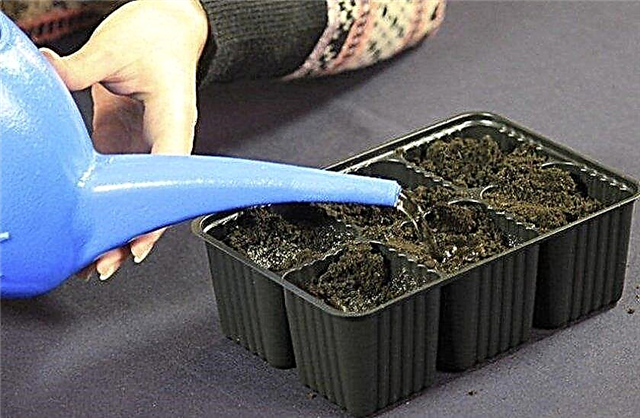
Seedling Care
Peppers should be placed in a well-lit place with a temperature of + 15 ... + 17 ° C. Such a decrease in temperature will prevent the sprouts from stretching. Then the temperature can be gradually increased to + 20 ... + 25 ° C. Peppers are watered only with defended heated water under the root, preventing the soil from drying out or waterlogging.
Pepper seedlings are fed twice:
- When 2-3 leaves appear. For feeding make such a solution: 10 g of potassium sulfate, 10 g of urea and 30 g of superphosphate are diluted in 5 l of water.
- 2 weeks after the first feeding, the same fertilizers are taken in double concentration.
 A couple of weeks before planting, the peppers are quenched. Seedlings are taken out to the balcony for 2 hours, and then the time spent in the fresh air is increased to a full day.
A couple of weeks before planting, the peppers are quenched. Seedlings are taken out to the balcony for 2 hours, and then the time spent in the fresh air is increased to a full day.Did you know? Ascorbic acid was first discovered and isolated from red pepper by Albert Saint-György in the 20s of the XX century. In 1937, the biochemist received the Nobel Prize for this discovery.
How to transplant seedlings to a permanent place
For pepper, it is important to choose the right time and place for planting, prepare the beds and adhere to the recommended schemes.
The timing
Seedlings are ready for planting when the plant reaches approximately 20 cm and will have 7–9 well-developed leaves. This age is approximately 53-60 days. It is planted in open ground when freezing is no longer predicted, and the soil warms up above + 15 ° C. The average air temperature should be +16 ... + 18 ° C. This is usually the third decade of May.
Site selection
Pepper is a heat-loving plant crop, therefore, when planting, you need to choose a site well-lit by sunlight, which is well protected from gusts of wind. If necessary, you can drop the wings against the drafts of corn. It is better to plant in a soil rich in nutrients and loose enough so that air and moisture freely flow to the root system of the plant. It is recommended to improve the beds with organic fertilizers during the autumn digging. Be sure to follow the rules of crop rotation. You can not plant pepper after solanaceous crops for 3 years. Undesirable precursors are tomatoes, eggplant, potatoes. You should choose for planting areas where the predecessors were carrots, herbs, cabbage, onions, cucumbers or legumes. Do not plant on a site where groundwater comes close to ground level. Pepper does not tolerate excess moisture. The problem with groundwater can be solved by erecting high insulated beds.
Be sure to follow the rules of crop rotation. You can not plant pepper after solanaceous crops for 3 years. Undesirable precursors are tomatoes, eggplant, potatoes. You should choose for planting areas where the predecessors were carrots, herbs, cabbage, onions, cucumbers or legumes. Do not plant on a site where groundwater comes close to ground level. Pepper does not tolerate excess moisture. The problem with groundwater can be solved by erecting high insulated beds.
Scheme and depth of landing
Experts recommend planting seedlings in the ground as follows:
- the distance between plants should be about 0.4 m;
- between rows of landings, the gap should be about 0.4-0.5 m.
How to care in the open ground
After planting in the soil, the plant must be provided with proper care to obtain a good crop.
Watering
Water the plant crop at least 2 times in 7 days. When the heat occurs, the procedure is carried out more often - at least 3 times in 7 days. About 1–2 liters are consumed per bush. Especially you need to monitor watering during the fruiting period. Improper watering during this period can reduce yields. Water for irrigation should be settled and not cold. Watering itself should be carried out at the root, since moisture on the leaves and the stem can cause burns from the sun. It is better to water in the morning or evening. Experts recommend the use of drip irrigation of plants.
Water for irrigation should be settled and not cold. Watering itself should be carried out at the root, since moisture on the leaves and the stem can cause burns from the sun. It is better to water in the morning or evening. Experts recommend the use of drip irrigation of plants.
Soil care
After watering, it is recommended to loosen the soil. In the process of loosening, weed removal must be carried out, which draws part of the nutrients and moisture from the soil. Experts also recommend mulching the soil with sawdust, hay, humus. It will not be superfluous to carry out the hilling of the grown pepper bushes. This will strengthen the root system.
Fertilizer application
After planting in the soil in seedling method, the plant needs to be fertilized 3-4 times:
- 10-14 days after planting, top dressing is made from rotted manure or chicken droppings. To do this, take such organics about 0.5 liters per 10 liter bucket. 200 g of wood ash, 50 g of superphosphate, 15 g of potassium chloride are also added.
- During flowering, foliar top dressing should be carried out. For spraying plants, a solution of boric acid (1 g per 1 l) is used.
- During the formation of the ovary, the root is irrigated (250 g per 1 plant) with the following solution for top dressing - 5 g of urea, 10 g of superphosphate are dissolved in a bucket of water (10 l).
- During the formation of the fruit. The next solution is prepared - 30 g of nitroammophos are dissolved in a 10 liter bucket of water.
Video: Fertilizing pepper to increase yield
Bushes garter
Morozko grade pepper requires a garter, as the bush can reach a height of up to 0.8 m. For garter, you can use pegs hammered in next to each other or trellis installed along a row. This will protect the crop well from wind gusts, as well as give stability, and the bush will not break under the weight of the fruit.
Important! Experts recommend removing leaflets, lateral processes, as well as a flower on the main central shoot. This will increase the yield of peppers.
Morozko pepper is perfect for residents of regions with a cool climate. This variety will not leave fruit with excellent taste without a crop even under adverse growing conditions.

